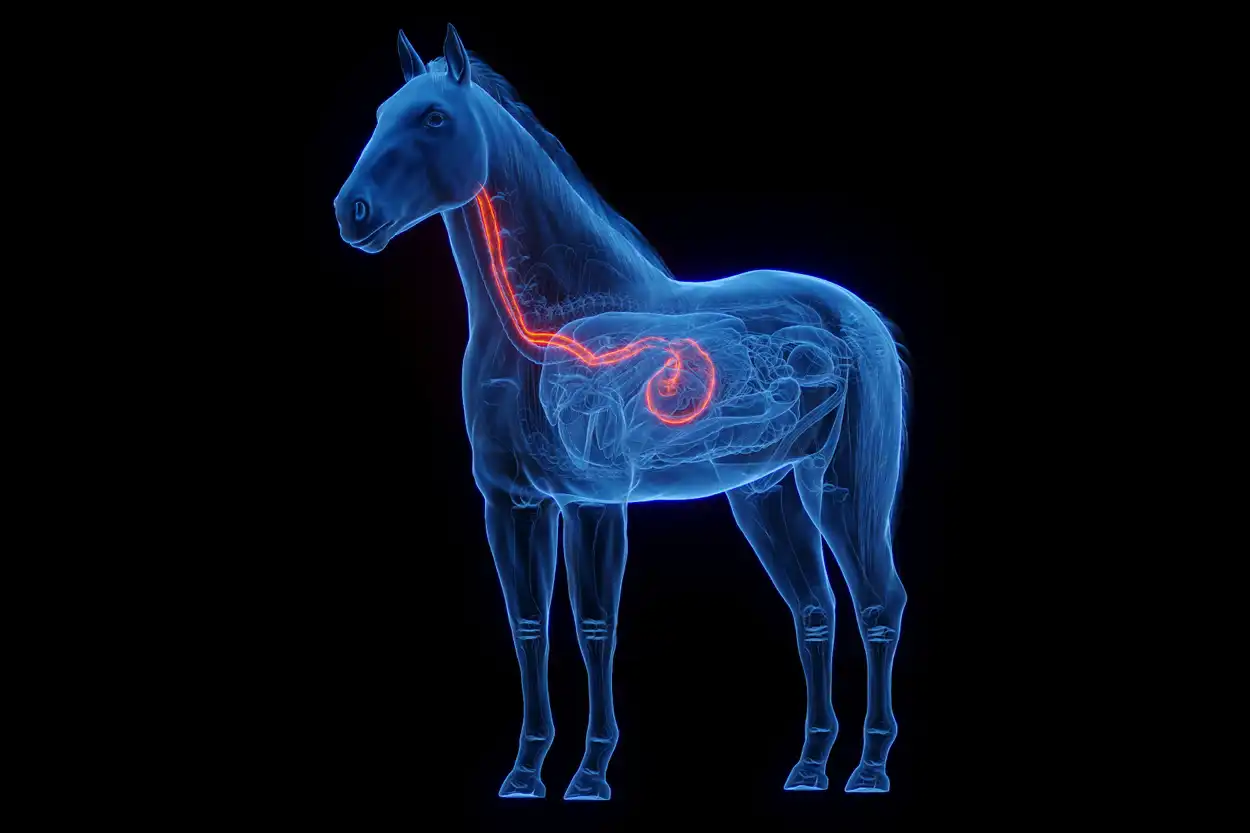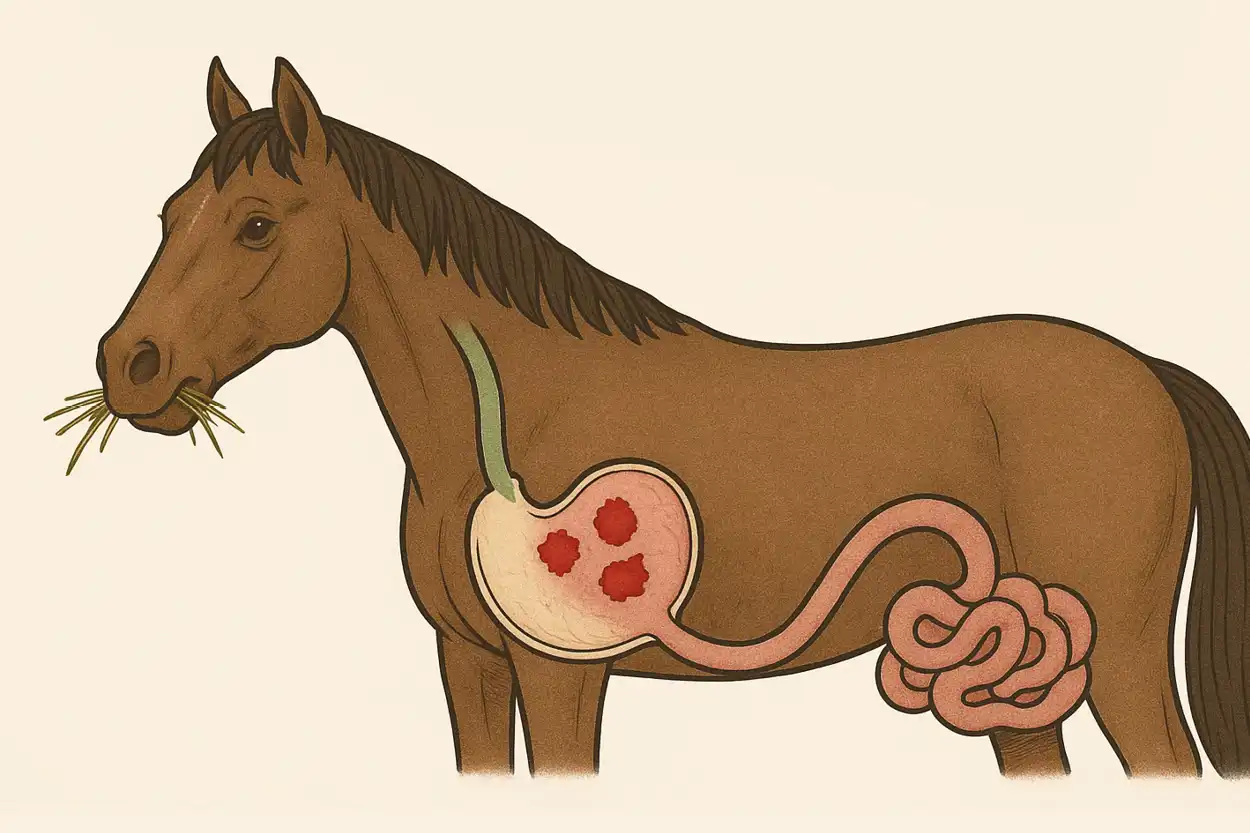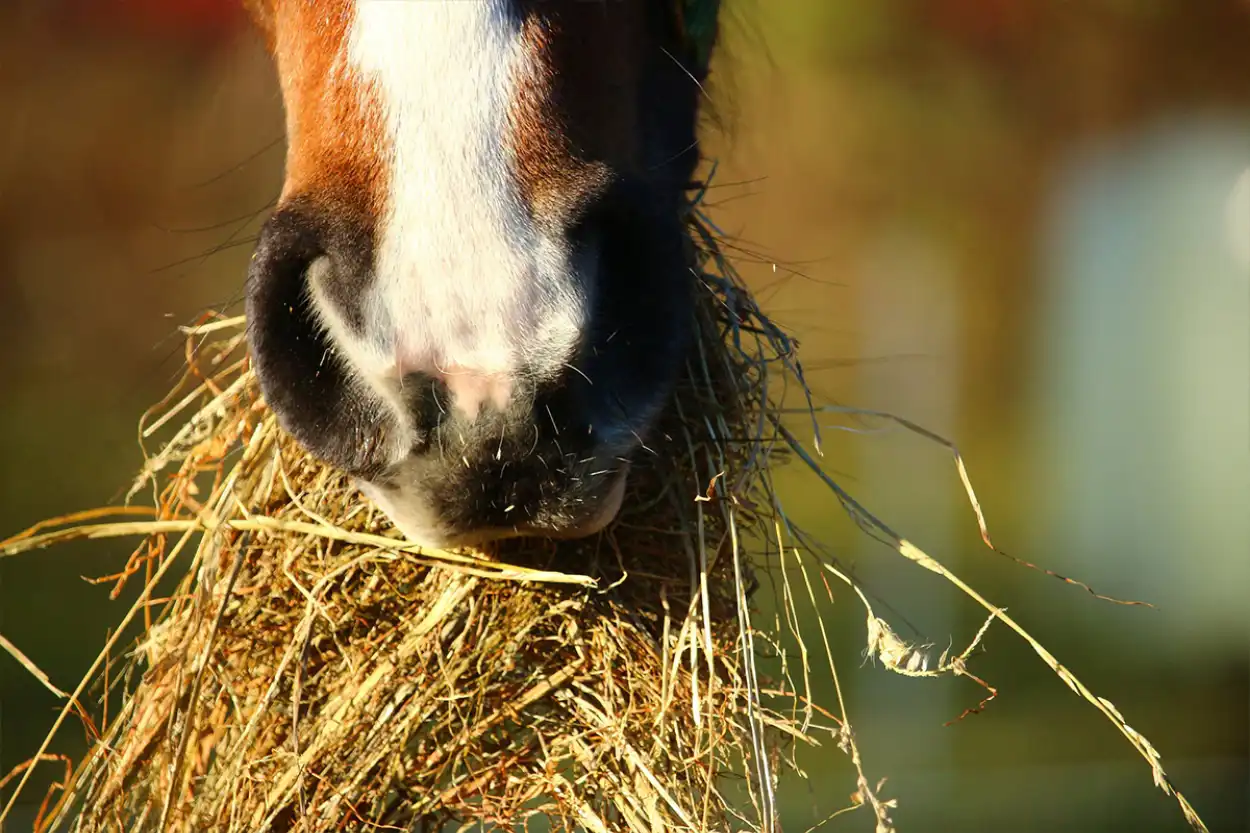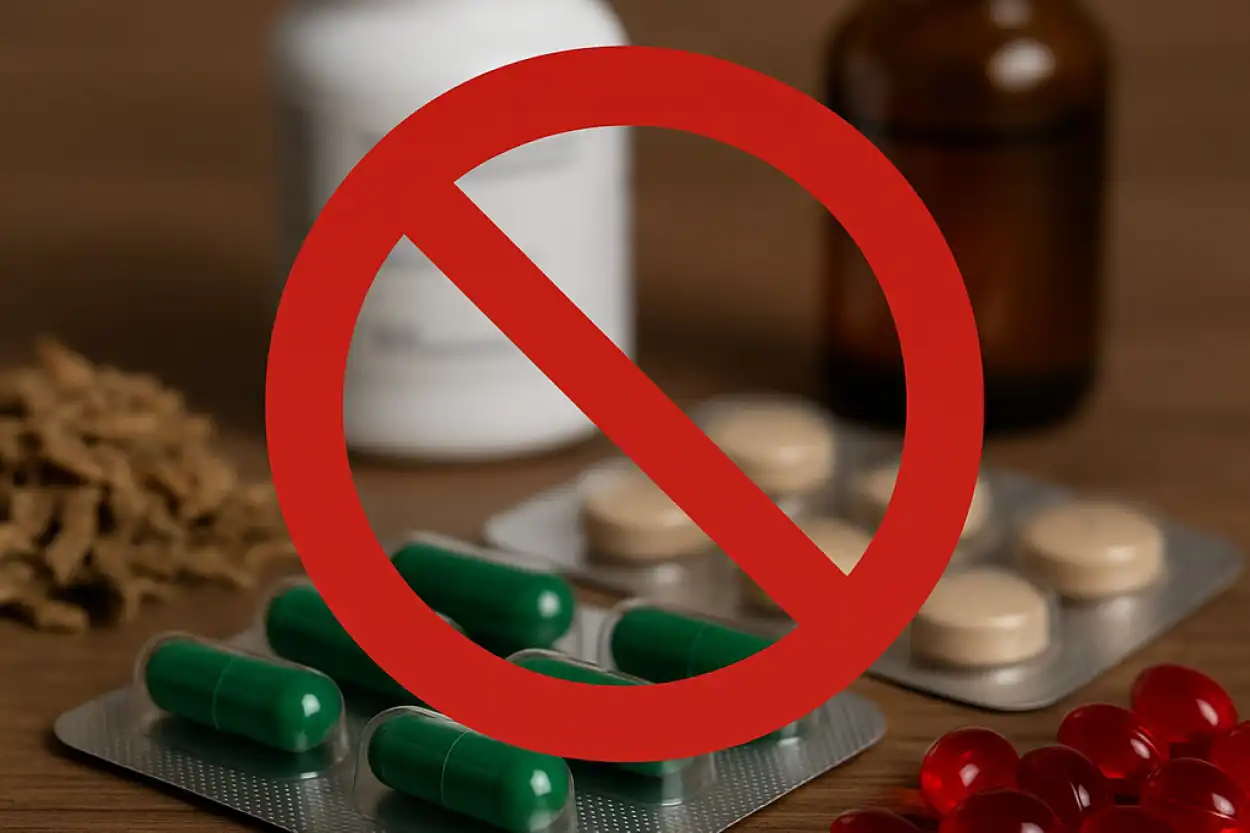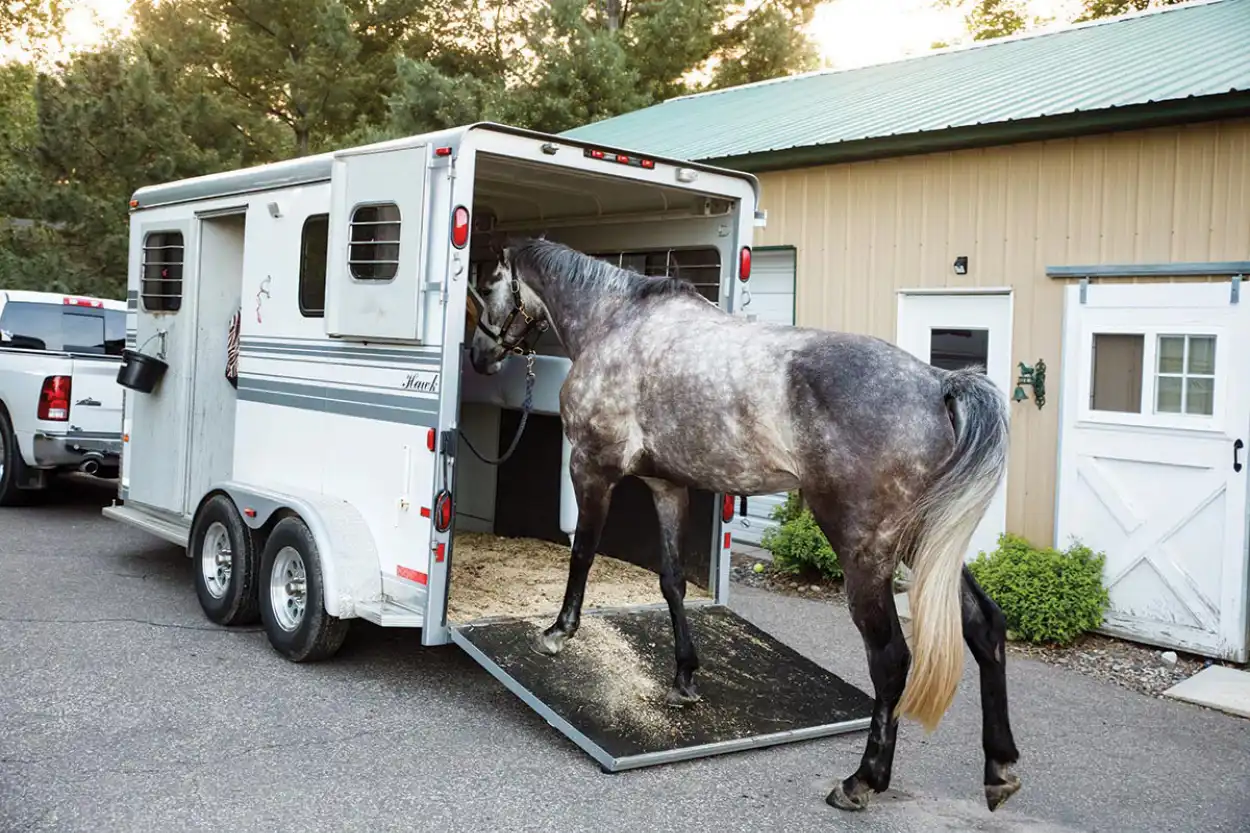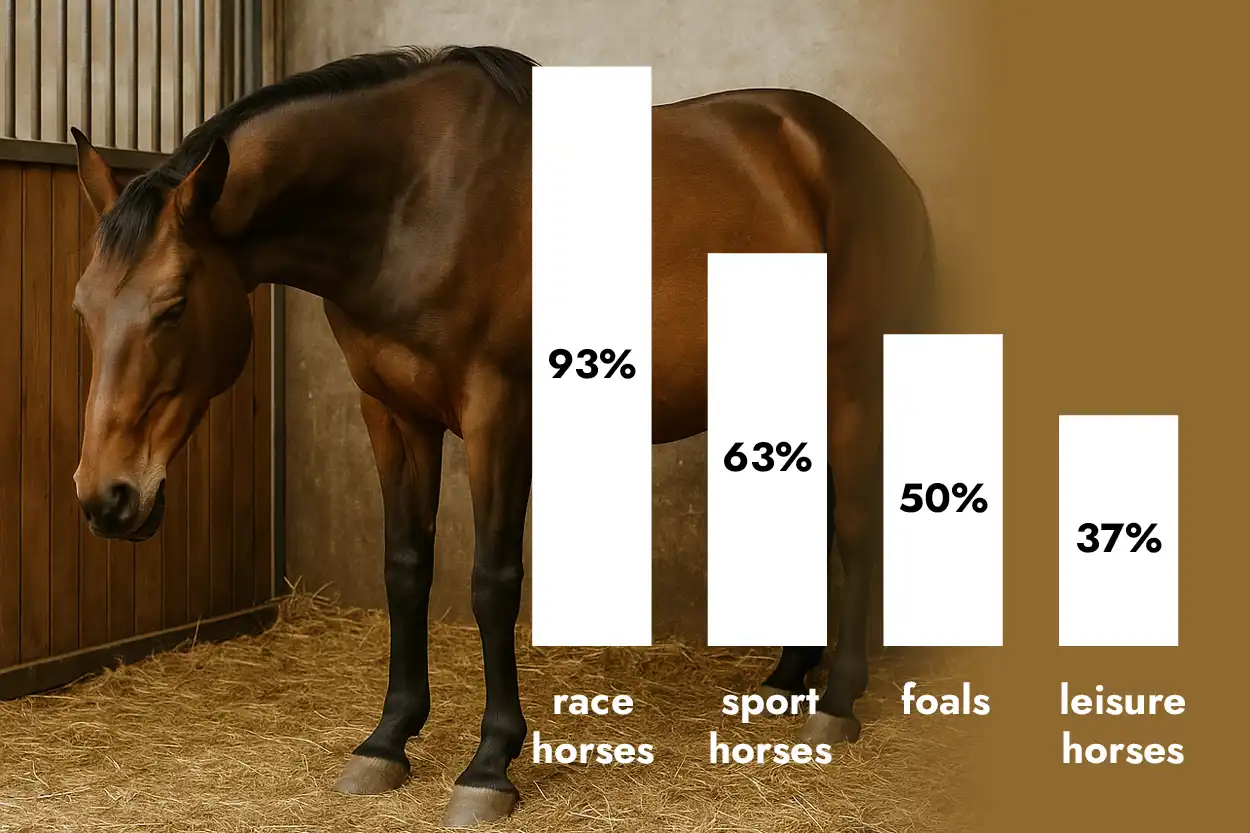Anatomy and Function of the Horse’s Stomach – And Why So Many Horses Suffer from Gastric Ulcers
The Anatomy of the Horse’s Stomach
The horse’s stomach is a relatively small, L-shaped organ with a capacity of only about 10–15 litres – surprisingly little for such a large animal. Food enters the stomach via the oesophagus, where it mixes with gastric juices and begins the digestive process. A unique feature is the two-part division of the stomach lining:
- Pars non glandularis (non-glandular part): This upper third does not produce gastric acid and has little protection against acid.
- Pars glandularis (glandular part): Produces stomach acid and is protected by mucus and bicarbonate.
Between the two sections lies the Margo plicatus, a key anatomical border and a common weak point for ulcer development.
Function of the Stomach
The stomach’s main tasks include:
- Mixing food with gastric juice via muscle contractions
- Acidifying feed with hydrochloric acid (HCl) to kill pathogens
- Breaking down proteins using the enzyme pepsin
Important to note: Unlike humans, the horse’s stomach produces gastric acid continuously – even when the horse isn’t eating.
Why Do Gastric Problems Occur? – Equine Gastric Ulcer Syndrome (EGUS)
EGUS is a common yet often underestimated condition in horses. It involves inflammation or ulcers of the stomach lining caused by an imbalance between acid production and protective mechanisms.
Causes:
- Feed gaps over 4 hours
- Insufficient roughage intake
- High levels of concentrate feed (grains, sugars)
- Stress (housing, training, stable changes)
- Medications (especially NSAIDs, corticosteroids)
- Poor feed quality
If feed intake is too low, saliva and fibrous material are missing as natural buffers. The acid then attacks the unprotected lining of the non-glandular part – leading to irritation, inflammation, and ulcers.
Feeding: A Central Role
Roughage as a Protective Factor
Forage such as hay or grass should always be available – or at least provided often enough to prevent feed gaps of more than 3–4 hours.
Benefits:
- Plenty of saliva = more bicarbonate for buffering
- Loose structure = good mixing with gastric juice
- Fast stomach passage = acid moves along quickly
Concentrate Feed as a Risk Factor
Grain-based feed is fermented in the stomach, producing lactic acid – another source of acid. Concentrates are also dense and poorly mixed with stomach acid, staying in the stomach longer – ideal conditions for acid-related damage.
Risky Feed for Sensitive Horses
| Feedstuff
|
Risk
|
|
Apples
|
High in fructose & acid → lactic acid formation
|
| Bananas
|
Very high in sugar
|
| Citrus fruits
|
High acid content |
| Dry bread
|
White flour, high starch → strongly acid-forming |
| Treats
|
Usually high in sugar & grain
|
| Spicy foods
|
Irritating to stomach lining, especially in sensitive horses
|
Tip: Small amounts may be safe for healthy horses – but should be strictly avoided in “ulcer-prone” horses!
Stress – The Invisible Trigger
Stress reduces stomach blood flow and suppresses mucus production. Common stressors:
- Frequent transportation
- Competition-related pressure
- Unstable herd dynamics
- Food-related aggression or rank conflicts
- Stall housing with limited movement
Minimising stress through species-appropriate management is crucial for ulcer-prone horses.
Prevalence – An Underestimated Epidemic?
A study (McClure et al., 1999) revealed alarming figures:
- 93% of racehorses
- 63% of sport horses
- 50% of foals
- 37% of leisure horses
…showed gastric lesions during gastroscopy. The actual numbers may be even higher, as many symptoms are non-specific (e.g. poor performance, girthiness, dull coat, yawning, chewing without food, colic tendencies).
Conclusion: How to Keep the Horse’s Stomach Healthy
- Provide roughage ad libitum (especially hay)
- Avoid feed gaps > 4 hours
- Reduce or replace concentrate feed
- Minimise stress – improve herd housing
- Regular check-ups for sensitive horses
- Use gastric protection when giving medications

